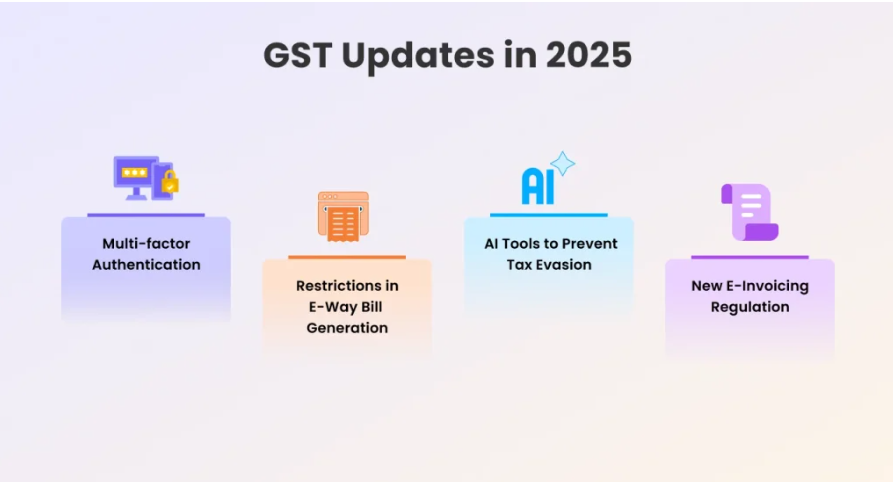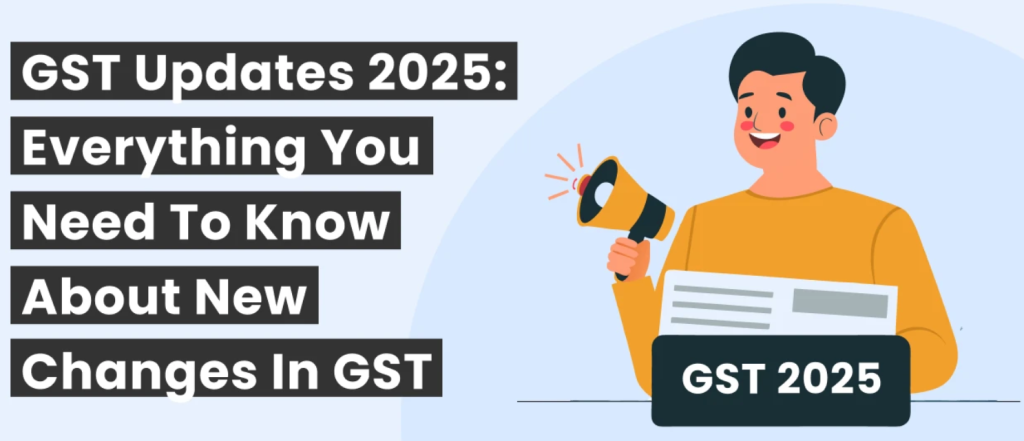
The Goods and Services Tax (GST) system in India continues to evolve, with the government introducing significant changes for the financial year 2025–26. These updates aim to enhance compliance, improve transparency, and streamline tax reporting for businesses. In this blog, we provide a detailed overview of GST and all the new changes effective from April 1, 2025, ensuring businesses are well-prepared to adapt to the updated framework.
What is GST? A Quick Recap
GST is India’s unified indirect tax system implemented on July 1, 2017. It replaced multiple taxes like VAT, excise duty, and service tax, simplifying the taxation process and creating a transparent structure. GST is levied at every stage of value addition and collected at the point of consumption.
Key Features
- Multi-Stage Taxation: GST applies at every stage of the supply chain.
- Input Tax Credit (ITC): Businesses can claim credit for taxes paid on inputs.
- Destination-Based Tax: Tax revenue goes to the state where goods or services are consumed.
Types of GST
- Central GST (CGST): Levied by the central government on intra-state supplies.
- State GST (SGST): Levied by state governments on intra-state supplies.
- Integrated GST (IGST): Applied to inter-state supplies and imports.
- Union Territory GST (UTGST): Similar to SGST but applicable in union territories.
Key GST Changes Effective April 2025

The financial year 2025–26 introduces several critical amendments to the GST framework. Below is a comprehensive list of these changes:
1. Non-Editable Table 3.2 in GSTR-3B
What’s Changed?
Starting April 2025, Table 3.2 of GSTR-3B, which captures inter-state supplies to unregistered persons, composition taxpayers, and UIN holders, will become non-editable. Values in this table will auto-populate from data declared in GSTR-1, GSTR-1A, or Invoice Furnishing Facility (IFF) filings.
Implications:
- Errors in Table 3.2 can no longer be rectified directly in GSTR-3B.
- Amendments must be made by revising GSTR-1A or subsequent GSTR-1/IFF filings.
- Businesses must ensure precise reporting in GSTR-1 to avoid mismatches.
2. Enhanced HSN Code Reporting in GSTR-1/1A
Phase-III Implementation:
Starting April 2025:
- Table 12 in GSTR-1/1A is split into B2B and B2C sections for HSN-wise summary reporting.
- Manual HSN code entry is discontinued; taxpayers must select codes from a predefined dropdown list.
- The “Description as per HSN Code” field auto-fills based on the selected code.
Turnover-Based Requirements:
- Businesses with ≤ ₹5 Crore Aggregate Annual Turnover (AATO): Mandatory 4-digit HSN codes for goods/services.
- Businesses with > ₹5 Crore AATO: Mandatory 6-digit HSN codes.
3. Stricter E-Way Bill Regulations
New rules have been introduced to curb misuse:
- E-way bills can only be generated for invoices issued within the preceding 180 days.
- Extensions are capped at 360 days from the original generation date.
4. Lowered E-Invoicing Threshold
The threshold for mandatory e-invoicing has been reduced from ₹10 crore to ₹1 crore annual turnover. Additionally:
- Invoices must be uploaded to the Invoice Registration Portal (IRP) within 30 days of issuance to avoid penalties or ITC denial.
5. Mandatory Multi-Factor Authentication (MFA)
To enhance digital security:
- All GST portal logins now require MFA, combining passwords with OTPs/biometric verification.
- MFA applies to taxpayers generating e-way bills or filing returns.
6. Input Service Distributor (ISD) Registration
From April 2025:
- Businesses with multiple GST registrations under one PAN must use the ISD mechanism to distribute Input Tax Credit (ITC). Cross-charge methods are no longer permitted.
- ISD invoices must be issued, and monthly GSTR-6 filings are mandatory.
7. Revised Compliance for Hospitality Sector
Changes impacting hotels and restaurants:
- Hotels charging more than ₹7,500/day must levy an 18% GST on meals served in their restaurants (up from 5%), with full ITC eligibility.
- The “Declared Tariff” concept has been abolished; taxes will now apply to actual transaction value instead of pre-declared rates.
8. Uniform GST Rate for Used Cars
A flat 18% GST applies to margin values (selling price minus purchase price) for all categories of used cars:Margin Value=Selling Price−Purchase Price\text{Margin Value} = \text{Selling Price} – \text{Purchase Price}Margin Value=Selling Price−Purchase Price
No tax is levied if the margin is negative.
9. New Invoice Series Requirement
For FY 2025–26:
- Businesses must start fresh invoice series with sequential numbering.
- Separate series must be maintained for credit/debit notes.
10. Amnesty Scheme for Legacy Issues
A special amnesty scheme has been introduced for FYs 2017–18 to 2019–20:
- Full waiver of interest/penalties if principal tax dues are cleared by March 31, 2025.
- Applications must be submitted within three months of April 2025.
11. Reassessment of Aggregate Turnover
Businesses must reassess their aggregate turnover to determine compliance obligations for registration, e-invoicing, and filing under the Quarterly Return Monthly Payment (QRMP) scheme.
12. Reverse Charge Mechanism (RCM) Compliance
Businesses are required to reconcile transactions under RCM more rigorously to ensure accurate tax reporting.
Steps for Businesses to Adapt
To comply with these changes effectively:
- Review GSTR-1 Data: Ensure accuracy in HSN codes and inter-state supplies to avoid mismatches in auto-populated data.
- Update ERP Systems: Align software with new invoice series requirements and dropdown-based HSN code selection.
- Train Teams: Educate staff on revised ITC distribution processes, EWB timelines, and MFA protocols.
- Reconcile Turnover: Reassess aggregate turnover to determine QRMP eligibility and e-invoicing compliance.
- Vendor Communication: Inform vendors about ISD details and procedural updates.
Conclusion
The April 2025 GST updates reflect the government’s focus on automation, transparency, and fraud prevention within India’s tax ecosystem. While these changes may increase compliance burdens initially, they aim to create a more robust taxation framework that benefits businesses and taxpayers alike.